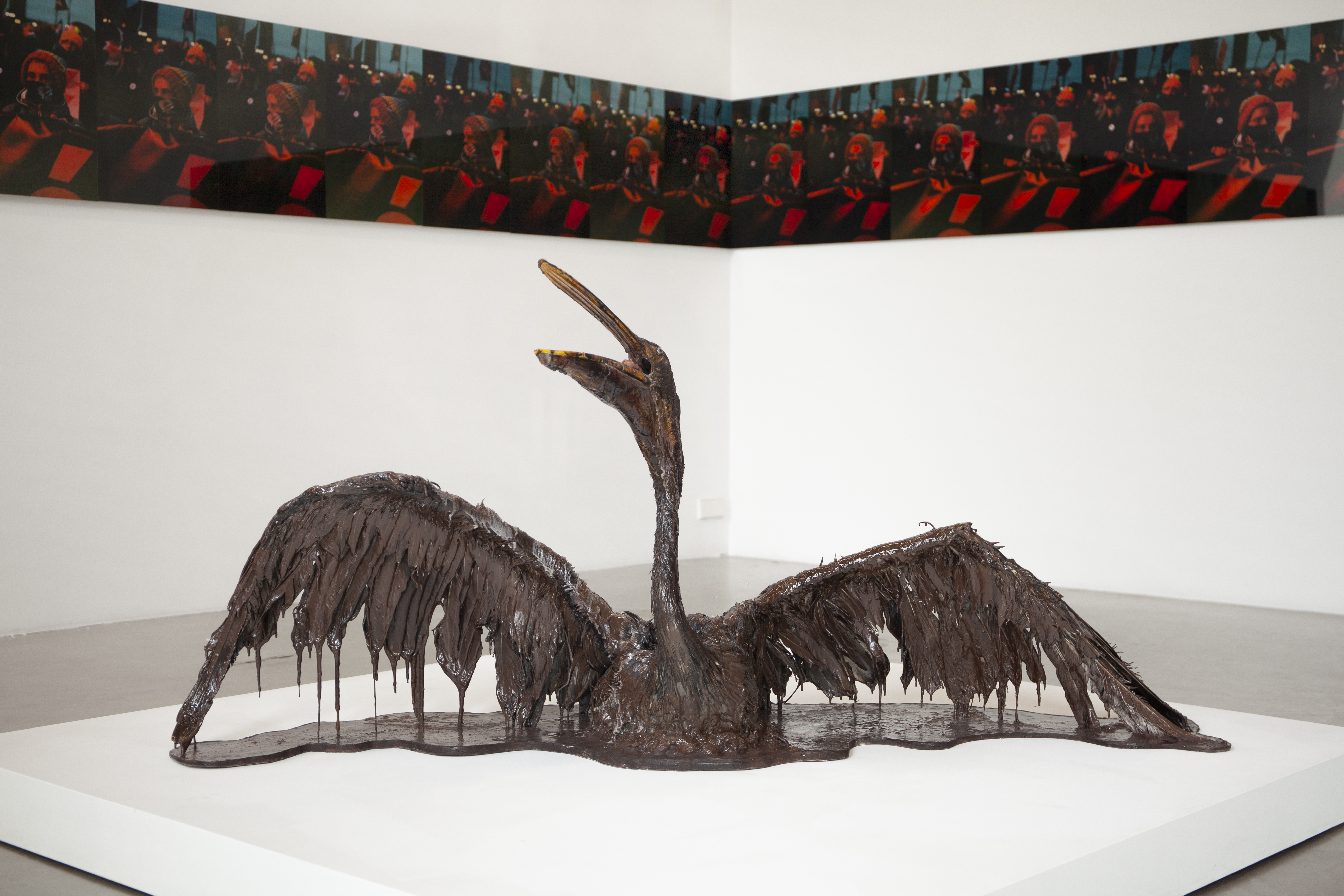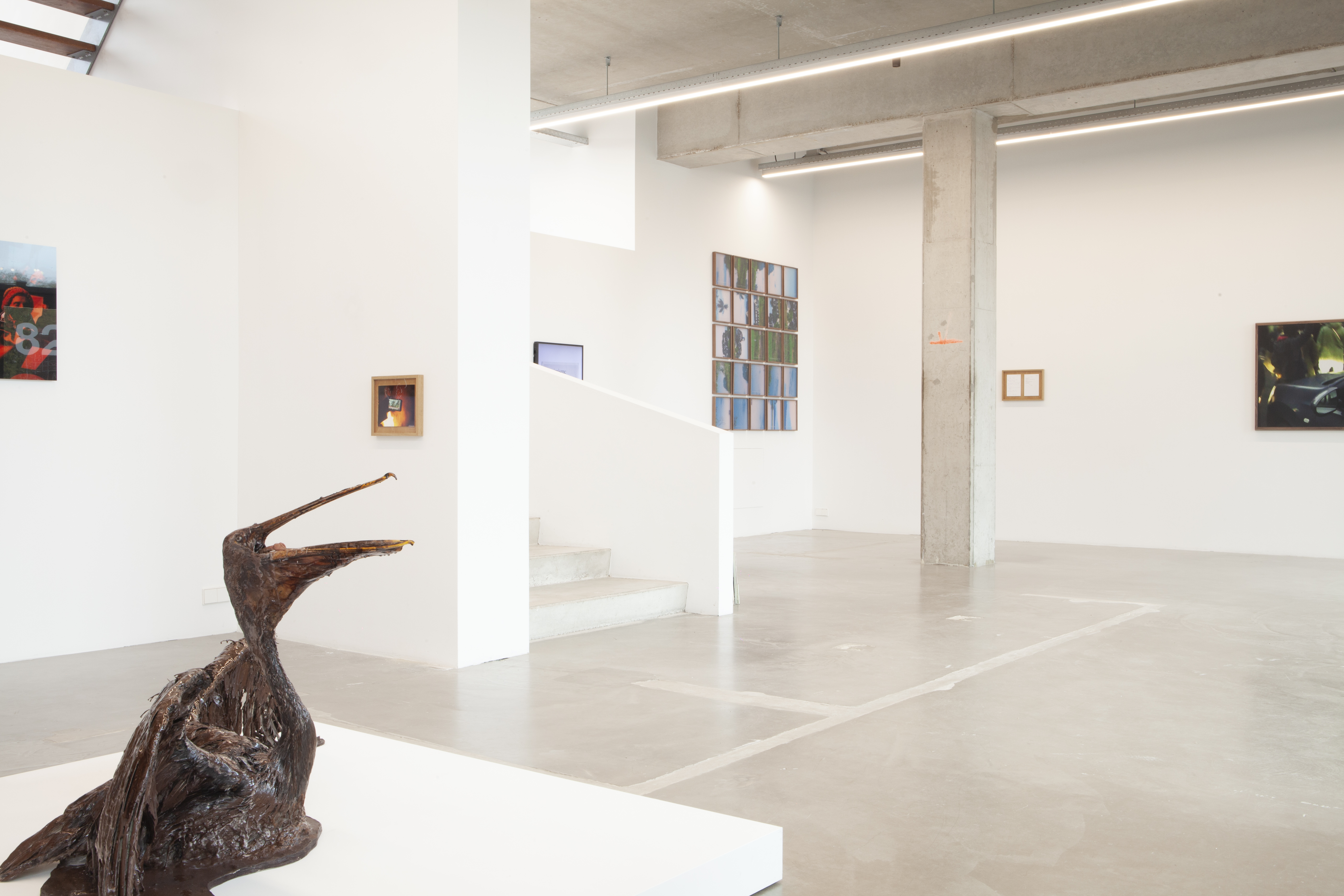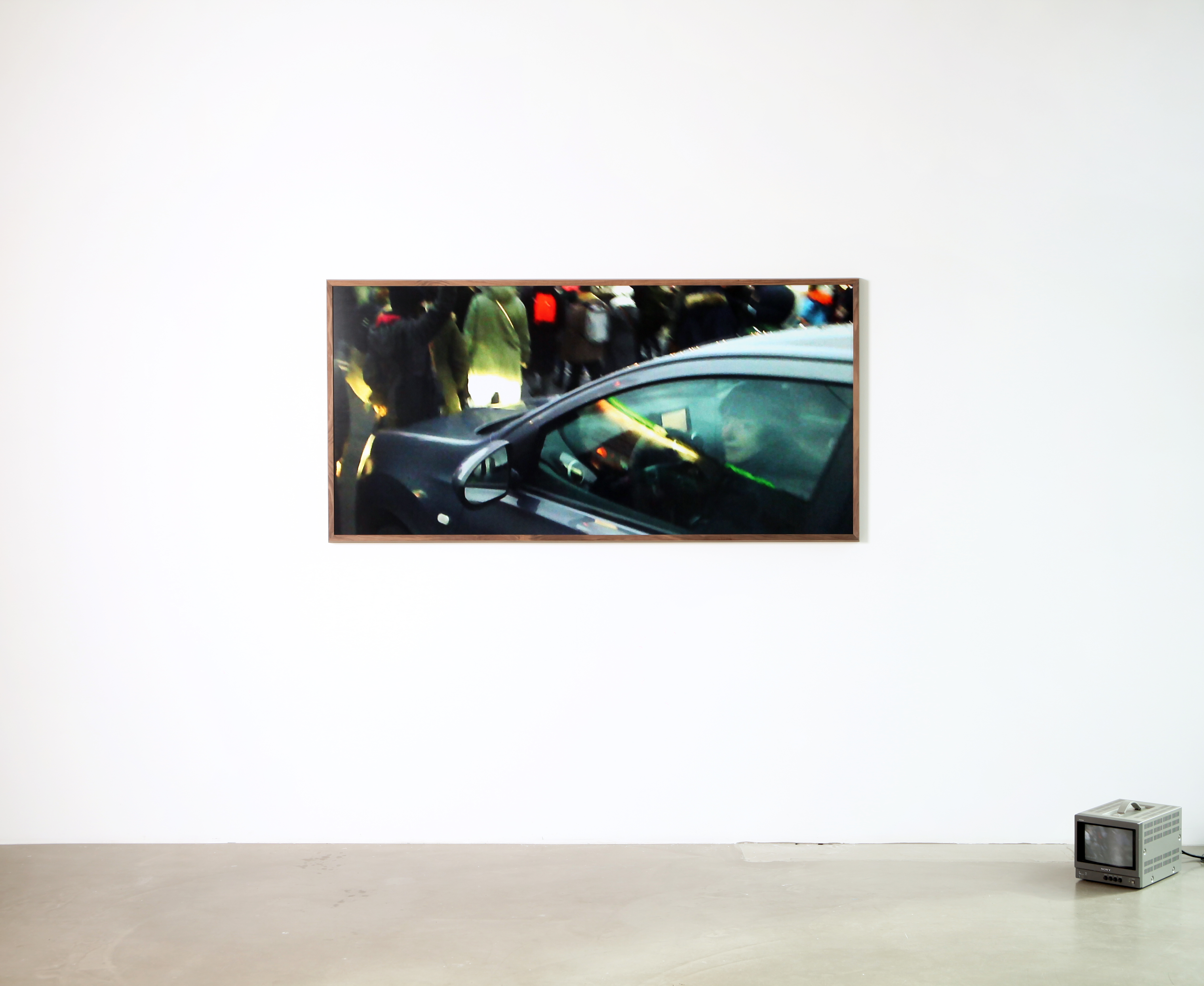
Installation Shot Volumes, The Ravestijn Gallery, Amsterdam, 2021

 Deepwater Horizon, 2021
Deepwater Horizon, 2021
Installation Shot Volumes, The Ravestijn Gallery, Amsterdam, 2021
 Burst (Continouous Light), 2021
Burst (Continouous Light), 2021Exhibitions:
The Ravestijn Gallery (Amsterdam, NL)
Noorderlicht Photo Festival (Groningen, NL)
Publications:
Bukblad (NL)
This project was supported by the Mondriaan Fund and The Constant van Renessefonds.
Volumes, 2021
Multimedia Installation
Volumes consists of new photographic works, videos, sculptures, etchings and archival objects, forming an experimental installation that brings Kuijpers’ fascination with contemporary events and their representations to its most present.
Over the last year, flatness has preceded everything. Whether through the screens we use for daily meetings or the newspapers we leaf through looking for news about tomorrow, flatness is no longer just a choice. It has become the default means to experience because of an inability to do otherwise. In a time when we can only move within prescribed boundaries, flatness reigns supreme.
At the same time, our flattened existence has not extinguished the urge to seek each other out in times of struggle, injustice, sadness and fury. Countless events of police brutality, women’s rights violations, corruption and environmental disasters have seen millions come together in defiance, shoulder to shoulder.
It seems that today, perhaps more than ever, the world unfolds on two polarised fronts; one visceral, wrought with presence, and one flattened, an unending constellation of two-dimensional media. Whilst they are different, both fronts add to a kaleidoscope of experiences for each and every happening.
In Volumes, Kuijpers examines how the landscape of flat media conditions our responses to events in the real world. To do so, Kuijpers has scoured recent history for events that epitomise the divide between an event and its representations. The protests in Poland over abortion rights, the BP Deepwater Horizon oil spill and the commodities of the pandemic amongst others. In every event, there has been a transformation. Each has happened in the world, and then each has been multiplied, manipulated and moulded into a torrent of other, but related, experiences. Volumes unpacks these other experiences found in television, iconic imagery, advertisements and products, asking what happens to the real issues when these new experiences swamp our daily lives.
When, for instance, Deepwater Horizon erupted in 2010, the event for most of us happened not through the event itself but through the hundreds of images and videos that came after. One such image was of a pelican, wings outstretched and engulfed in oil. It is an iconic photograph — a digital analogue for the disaster. For Volumes, Kuijpers used the image to create two new representations of the event. One, an engraved copper plate with the photograph repeated so it resembles a Google image search, and the other a taxidermic replica of the pelican, complete in its identical pose. In both works, Kuijpers has taken an event we knew only through its compressed, pixelated form and made it tangible — more real, perhaps, than before. In doing so, he makes us aware of how our experience of the world is conditioned by the media that represents it.
Volumes does this repeatedly, but whilst the works themselves aren’t restricted to a single medium or material — mirroring the infinite ways an event is represented — the same questions persist throughout the exhibition. What is felt and what is lost when an event is made flat? What does it mean to participate and what does it mean to spectate? How do events in the past meet us in the present and what do they mean for the future? As is characteristic of Kuijpers’ work, Volumes is an installation of palpable experiences that test, poke, stretch and reiterate these questions. Kuijpers, however, doesn’t want us to simply experience them, but to think about their consequences too. After a year defined by flatness, Volumes is a timely and visceral encounter.
Multimedia Installation
Volumes consists of new photographic works, videos, sculptures, etchings and archival objects, forming an experimental installation that brings Kuijpers’ fascination with contemporary events and their representations to its most present.
Over the last year, flatness has preceded everything. Whether through the screens we use for daily meetings or the newspapers we leaf through looking for news about tomorrow, flatness is no longer just a choice. It has become the default means to experience because of an inability to do otherwise. In a time when we can only move within prescribed boundaries, flatness reigns supreme.
At the same time, our flattened existence has not extinguished the urge to seek each other out in times of struggle, injustice, sadness and fury. Countless events of police brutality, women’s rights violations, corruption and environmental disasters have seen millions come together in defiance, shoulder to shoulder.
It seems that today, perhaps more than ever, the world unfolds on two polarised fronts; one visceral, wrought with presence, and one flattened, an unending constellation of two-dimensional media. Whilst they are different, both fronts add to a kaleidoscope of experiences for each and every happening.
In Volumes, Kuijpers examines how the landscape of flat media conditions our responses to events in the real world. To do so, Kuijpers has scoured recent history for events that epitomise the divide between an event and its representations. The protests in Poland over abortion rights, the BP Deepwater Horizon oil spill and the commodities of the pandemic amongst others. In every event, there has been a transformation. Each has happened in the world, and then each has been multiplied, manipulated and moulded into a torrent of other, but related, experiences. Volumes unpacks these other experiences found in television, iconic imagery, advertisements and products, asking what happens to the real issues when these new experiences swamp our daily lives.
When, for instance, Deepwater Horizon erupted in 2010, the event for most of us happened not through the event itself but through the hundreds of images and videos that came after. One such image was of a pelican, wings outstretched and engulfed in oil. It is an iconic photograph — a digital analogue for the disaster. For Volumes, Kuijpers used the image to create two new representations of the event. One, an engraved copper plate with the photograph repeated so it resembles a Google image search, and the other a taxidermic replica of the pelican, complete in its identical pose. In both works, Kuijpers has taken an event we knew only through its compressed, pixelated form and made it tangible — more real, perhaps, than before. In doing so, he makes us aware of how our experience of the world is conditioned by the media that represents it.
Volumes does this repeatedly, but whilst the works themselves aren’t restricted to a single medium or material — mirroring the infinite ways an event is represented — the same questions persist throughout the exhibition. What is felt and what is lost when an event is made flat? What does it mean to participate and what does it mean to spectate? How do events in the past meet us in the present and what do they mean for the future? As is characteristic of Kuijpers’ work, Volumes is an installation of palpable experiences that test, poke, stretch and reiterate these questions. Kuijpers, however, doesn’t want us to simply experience them, but to think about their consequences too. After a year defined by flatness, Volumes is a timely and visceral encounter.


Triad, 2021